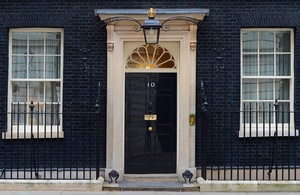Ukraine Independence Day
What should have been a time of celebration was this year marked by tragedy – 24 August also marked 6 months since Russia invaded the sovereign nation of Ukraine.
Since Ukraine’s independence in 1991, a proud, internationally engaged country, and one committed to freedom and the principles of the UN Charter, has emerged. Ukraine has become a global exporter of grain – feeding hundreds of millions of people around the world.
But now the country and all it has achieved is under threat. Over the last 6 months, the scale of atrocities against Ukraine’s citizens is certain, with extensive violations of international humanitarian and human rights law. Officially there have been 12,800 civilian casualties so far, with the expectation that real figures are considerably higher. At least 366 healthcare centres have been attacked, and over 2,200 schools. More than 12.8 million Ukrainians have been forced from their homes – displaced – with 6.2 million people now living as refugees.
The UK, EU and US, and many other countries, have stood by Ukraine in its darkest hour. We will continue to do so. We are committed to championing fundamental human rights, sovereignty, international humanitarian law and democratic values internationally, to help build a fairer, freer world.
Many Namibians will be able to relate to the grave situation in Ukraine, having fought so hard and so long for independence, and freedom from oppression, to become a proud, stable, democratic and peaceful nation.
The war in Ukraine continues to have a huge impact globally, affecting the most vulnerable people living in the world’s poorest countries. Since the beginning of the year, we have seen a rise in the cost of living around the world, including here in Namibia. Global food insecurity and the risk of famine is at an all-time high, driven by conflict, climate change and the COVID-19 pandemic.
At present, at least 1.6 billion people worldwide are directly affected by the surge in food and energy prices. In East Africa, millions of people are faced with the worst drought and food shortages in decades. Four consecutive years have seen insufficient rain for harvests. Livestock is dying, and the price of staple foods keeps rising.
Ukraine’s grain exports collapsed after the invasion, which has exacerbated food insecurity around the world. African countries import more than 12% of their wheat from Ukraine.
This war is also affecting the trade of fertilisers. The African Development Bank (AfDB) estimates that, due to the conflict, Africa faces a fertiliser shortfall of 4 million metric tonnes this year – 33-40% of supply in 2020. Without sufficient supply of fertiliser, Africa could lose $14-19 billion – one-fifth – worth of food production in the next 2 harvesting seasons, with significant knock-on consequences to food availability.
Recognising the global food crisis, international sanctions on Russia have deliberately not included food or fertiliser exports from Russia to third world countries. The UN-brokered deal to unblock Ukraine’s grain exports across the Black Sea is a vital step, and news of a shipment by the World Food Programme transporting grain from Ukraine to the drought-hit Horn of Africa region is a positive sign of progress.
However, to enable a lasting return to global security and economic stability, there must be peace. No country deserves war. But in war time, there are rules: there is international humanitarian law and there is the commitment we made to uphold this through the UN Charter and the important role played by the ICRC. The world needs a free and a safe Ukraine so it can securely return to supplying the world with its food.
Our commitment to a better world, one that is fairer and strives for freedom for all – especially in the aftermath of the pandemic – is a challenge that we all must face together. Ukraine is our friend in this global reconstruction effort, and it is our partner in food security.
As we commemorate Ukraine’s anniversary of independence, our respective countries and institutions stand together with Ukraine, both supporting Ukraine to help protect its own people, but also around the world in partnership with those nations who share these same goals.
Strength to you, Independent Ukraine.
Signed by:
HE Charles Moore, British High Commissioner
HE Sinikka Antila, Ambassador of the European Union
HE Herbert Beck, Ambassador of the Federal Republic of Germany
HE Sébastien Minot, Ambassador of the Republic of France
HE Alberto de la Calle, Ambassador of Spain
HE Luis Gaspar Da Silva, Ambassador of Portugal
Jessica Long, Chargée d’Affaires a.i, United States of America
Matti Karvanen, Chargé d’Affaires a.i., Embassy of Finland
